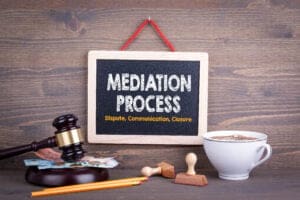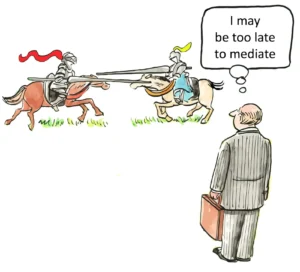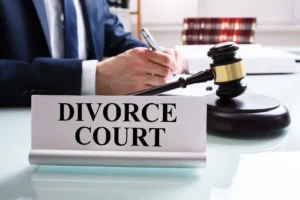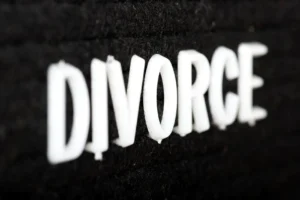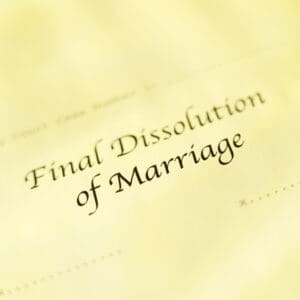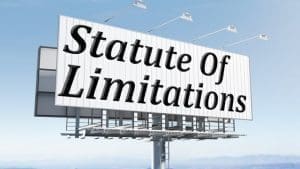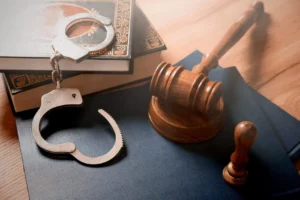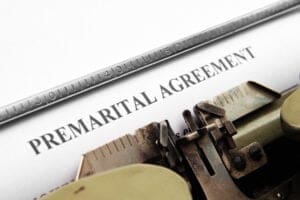How to Win a Breach of Contract Lawsuit
How to win a breach of contract lawsuit through strategic legal preparation and evidence gathering? Successful contract litigation requires methodical preparation that establishes all essential elements while anticipating potential defenses. Winning these complex legal disputes demands more than proving a broken promise—it necessitates comprehensive documentation, strategic damage calculations, and thorough understanding of contractual obligations and available remedies.
Breach of contract cases represent one of the most common forms of business litigation in American courts, with successful outcomes heavily dependent on meticulous case preparation and evidence presentation. The fundamental challenge lies not merely in demonstrating that contractual terms were violated, but in proving substantial damages that flow directly from the breach while overcoming sophisticated defenses that opposing parties frequently assert.
Modern contract disputes often involve intricate commercial relationships where New York contract enforcement principles exemplify the rigorous standards courts apply to determine liability and calculate appropriate remedies. Understanding these jurisdictional variations and their impact on case strategy becomes crucial for achieving favorable outcomes in increasingly complex business environments.
What Are the Essential Elements You Must Prove?
Contract validity forms the cornerstone of any successful breach claim, requiring proof of offer, acceptance, consideration, and mutual intention to create legally binding obligations. Courts scrutinize these foundational elements carefully, as weakness in establishing contract formation can undermine even the strongest breach allegations. The contract need not be written in all circumstances, though written agreements provide clearer evidence of the parties’ intentions and obligations.
Performance or justification for non-performance represents the second critical element that plaintiffs must establish to prevail in breach of contract litigation. This requirement demands demonstration that the non-breaching party fulfilled their contractual obligations or possessed valid legal justification for any failure to perform. Courts examine whether plaintiffs acted in good faith and complied with all material contract terms before the alleged breach occurred.
Material breach by the defendant constitutes the third essential element, distinguishing between minor deviations that may trigger damage awards and substantial failures that justify contract termination. Material breaches go to the essence of the contractual relationship, substantially defeating the purpose for which the contract was formed. Courts evaluate factors including the extent of non-performance, the likelihood of future performance, and whether the breach deprives the other party of the contract’s essential benefits.
Causation and damages complete the four-element framework, requiring proof that the defendant’s breach directly caused quantifiable harm to the plaintiff. This element often presents the greatest challenge in contract litigation, as plaintiffs must establish clear causal links between contractual failures and claimed losses. Speculative or remote damages typically cannot support successful breach claims, emphasizing the importance of detailed financial documentation and expert testimony.
Foreseeability principles limit damage recovery to losses that were reasonably contemplated by the parties at contract formation. Under the classic Hadley v. Baxendale standard, consequential damages must have been within the reasonable contemplation of both parties as probable results of breach. This limitation protects defendants from unlimited liability while ensuring that damage awards reflect the parties’ actual expectations when entering into contractual relationships.
How Should You Document Your Performance?
Comprehensive record-keeping throughout the contractual relationship provides the evidentiary foundation necessary for successful breach claims. Systematic documentation begins before performance issues arise, creating contemporaneous records that courts find particularly credible compared to reconstructed evidence prepared after disputes emerge. These records should capture all material aspects of performance, including deliverables, timelines, communications, and any deviations from contractual requirements.
Communication records including emails, letters, text messages, and meeting minutes establish the parties’ understanding of contractual obligations and any modifications to original terms. Courts frequently rely on these communications to interpret ambiguous contract provisions and determine the parties’ actual intentions regarding performance standards. Preserving complete communication chains helps establish context and prevents opposing parties from selectively presenting favorable excerpts while omitting damaging admissions.
Performance documentation should include delivery receipts, work orders, inspection reports, and any other evidence demonstrating compliance with contractual specifications. Time-stamped photographs, video recordings, and third-party verification provide particularly compelling evidence of performance quality and timing. These materials help establish that performance met contractual standards and occurred within required timeframes.
Financial records supporting all payments, expenses, and financial obligations under the contract create clear audit trails that courts can easily follow. Bank statements, invoices, receipts, and accounting records should be maintained in organized fashion throughout the contractual relationship. These documents become crucial for establishing both the extent of performance and the calculation of damages resulting from breach.
Witness identification and statement preservation ensure that key testimony remains available throughout potentially lengthy litigation processes. Employees, contractors, customers, and other third parties who observed performance or breach should be identified early and their recollections documented while memories remain fresh. Written statements or affidavits can preserve important testimony and provide backup if witnesses become unavailable for trial.
What Evidence Proves the Other Party’s Breach?
Contract interpretation often becomes the central battleground in breach litigation, requiring careful analysis of specific terms that allegedly were violated. Courts examine contract language using established interpretation principles, including the plain meaning rule, consideration of industry customs, and analysis of the parties’ course of dealing. Ambiguous terms may be resolved through parol evidence, though this outside evidence remains subject to strict admissibility rules.
Timeline analysis helps establish when breach occurred and whether any cure periods or notice requirements affected the parties’ rights and obligations. Many contracts include specific procedures that must be followed before breach claims can be asserted, including advance notice requirements, opportunities to cure defects, and escalation procedures for dispute resolution. Failure to comply with these procedural requirements can bar otherwise valid breach claims.
Deviation documentation should clearly identify specific ways in which the defendant’s performance fell short of contractual requirements. This evidence might include substandard work quality, missed deadlines, incomplete deliverables, or failure to meet technical specifications. Comparison charts, expert analysis, and industry standard benchmarks help demonstrate the extent to which performance deviated from contractual expectations.
Notice and communication records establish whether proper procedures were followed in identifying and addressing performance issues. Many contracts require written notice of deficiencies and provide opportunities for corrective action before breach claims mature. Documentation showing that these procedures were followed strengthens breach claims, while failure to comply with notice requirements may provide defendants with procedural defenses.
Third-party verification from independent sources adds credibility to breach allegations and helps counter defendants’ claims of satisfactory performance. Independent inspectors, industry experts, and customer complaints provide objective evidence of performance failures that courts find particularly persuasive. These outside perspectives help establish that performance issues were genuine rather than pretextual claims designed to avoid contractual obligations.
How Do You Calculate and Prove Damages?
Expectation damages represent the primary measure of recovery in breach of contract cases, designed to place the non-breaching party in the position they would have occupied if the contract had been fully performed. This calculation requires careful analysis of the difference between the value of promised performance and the value of actual performance received. Expert testimony and detailed financial analysis often become necessary to establish these amounts with reasonable certainty.
Consequential damages extend beyond direct losses to encompass foreseeable indirect harm resulting from breach. These damages must have been within the reasonable contemplation of both parties at contract formation and cannot be too remote or speculative. Lost profits, business interruption costs, and additional expenses incurred to secure substitute performance represent common categories of consequential damages in commercial contract disputes.
Mitigation requirements impose duties on non-breaching parties to take reasonable steps to minimize their losses following breach. Failure to mitigate damages can reduce recovery even when breach is clearly established, emphasizing the importance of prompt action to secure alternative performance or minimize ongoing harm. However, mitigation expenses incurred in good faith efforts to reduce losses generally are recoverable from the breaching party.
Liquidated damages clauses may predetermine the amount of recovery in certain breach scenarios, eliminating the need for complex damage calculations if the clauses are valid and enforceable. These provisions must represent reasonable estimates of probable harm rather than punitive penalties, and courts scrutinize them carefully to ensure they serve legitimate compensatory purposes. Valid liquidated damage clauses can streamline litigation and provide cost-effective resolution of damage disputes.
Documentation standards require that all claimed damages be supported by reliable financial records and expert analysis sufficient to establish amounts with reasonable certainty. Speculative or uncertain damages cannot support contract recovery, regardless of how clear the breach may be. This emphasis on quantifiable harm underscores the importance of maintaining detailed financial records throughout the contractual relationship and engaging qualified experts to calculate complex losses.
What Defenses Should You Anticipate?
Impossibility of performance provides defendants with excuse-based defenses when unforeseeable circumstances make contractual performance objectively impossible. This defense requires proof that performance became impossible due to circumstances beyond the defendant’s control, such as destruction of subject matter, death or incapacity of essential personnel, or intervening legal prohibitions. However, economic hardship or increased costs typically do not establish impossibility unless the burden becomes truly extraordinary.
Frustration of purpose offers another excuse-based defense when supervening events destroy the fundamental basis or purpose underlying the contractual relationship. This defense applies when performance remains possible but the underlying purpose that motivated the contract has been substantially frustrated by unforeseeable circumstances. Courts require proof that the frustrated purpose was fundamental to the contract and that its destruction makes performance essentially pointless.
Anticipatory defenses including claims of prior breach, lack of performance, and failure to satisfy conditions precedent require careful analysis of the contractual sequence of obligations. Defendants often argue that the plaintiff’s own breach excuses their non-performance or that plaintiff failed to fulfill conditions necessary to trigger defendant’s obligations. These defenses emphasize the importance of maintaining clean performance records and satisfying all contractual prerequisites.
Formation challenges attack the validity of the contract itself through claims of lack of consideration, mutual mistake, duress, fraud, or unconscionability. These defenses can completely defeat breach claims by establishing that no enforceable contract existed in the first place. Formation defenses require careful examination of the circumstances surrounding contract execution and may involve complex factual disputes about the parties’ capacity, intent, and understanding.pmlawfla+1
Statute of limitations defenses bar breach claims filed beyond applicable time limits, which vary significantly between jurisdictions and contract types. These deadlines typically begin running when the breach occurs or when the plaintiff discovers or should have discovered the breach through reasonable diligence. Defendants carefully monitor limitation periods and may seek quick dismissal of untimely claims before engaging with merits-based defenses.
How Can Alternative Dispute Resolution Help?
Early settlement negotiations often provide cost-effective resolution opportunities that preserve business relationships while avoiding the expense and uncertainty of protracted litigation. Successful negotiations require careful preparation including damage calculations, risk assessment, and development of creative solutions that address both parties’ underlying interests. Settlement discussions can occur at any stage of the dispute but typically are most productive when both parties possess sufficient information to evaluate their positions realistically.
Mediation processes involve neutral third parties who facilitate discussions between disputing parties without imposing binding decisions. Mediation works particularly well in contract disputes where ongoing business relationships need preservation or where creative solutions might address underlying business problems better than legal remedies alone. The confidential nature of mediation encourages open discussion of settlement terms without fear that admissions will be used against parties in subsequent litigation.
Arbitration clauses in many commercial contracts require binding resolution through private tribunals rather than court litigation. These provisions can significantly affect case strategy, as arbitration procedures differ substantially from court litigation in terms of discovery rights, evidence rules, and appeal opportunities. Understanding arbitration requirements becomes crucial for case planning and may influence whether to pursue breach claims or seek declaratory relief regarding contract interpretation.
Cost considerations make alternative dispute resolution particularly attractive in contract disputes where legal fees may exceed potential recovery amounts. Traditional litigation costs including attorney fees, expert witnesses, discovery expenses, and court fees can quickly escalate beyond the value of contractual claims. Alternative resolution methods typically reduce these costs while providing faster resolution than court proceedings.
Strategic timing affects the success of settlement discussions, as parties’ leverage and willingness to compromise change throughout the litigation process. Early discussions may lack sufficient information for informed decision-making, while late-stage negotiations may be complicated by entrenched positions and accumulated legal expenses. The optimal timing for settlement discussions depends on case-specific factors including the complexity of legal issues and the parties’ relative bargaining positions.
When Should You Consider Specific Performance?
Unique subject matter makes monetary damages inadequate compensation in certain breach scenarios, justifying equitable relief through specific performance orders. Real estate transactions exemplify situations where specific performance may be appropriate, as each parcel of property possesses unique characteristics that cannot be replicated through monetary awards. Similarly, contracts involving rare goods, specialized services, or unique business opportunities may warrant specific performance when damages prove insufficient.
Inadequate legal remedies provide the foundational requirement for all equitable relief, including specific performance of contractual obligations. Courts grant equitable remedies only when legal remedies (primarily monetary damages) fail to provide adequate compensation for the harm suffered. This inadequacy may result from difficulty calculating damages, inability to obtain substitute performance, or unique circumstances that make monetary compensation inherently insufficient.
Feasibility requirements limit specific performance to situations where court supervision is practical and effective. Courts generally avoid ordering specific performance of personal service contracts or other obligations requiring ongoing supervision or complex performance monitoring. The remedy works best with discrete, clearly defined obligations that can be accomplished without extensive court oversight or potential for continuing disputes.
Equitable considerations including clean hands, laches, and proportionality affect courts’ willingness to grant specific performance even when technical requirements are satisfied. Plaintiffs seeking equitable relief must demonstrate that they acted fairly throughout the contractual relationship and that specific performance serves the interests of justice. Courts balance the hardship to defendants against the benefits to plaintiffs when determining whether specific performance is appropriate.
Strategic advantages of seeking specific performance extend beyond obtaining desired performance to include enhanced settlement leverage and protection against damage calculation disputes. The threat of compelled performance may encourage defendants to negotiate more favorable settlements, while specific performance claims can proceed even when damage calculations prove difficult or uncertain.
What Role Do Expert Witnesses Play?
Damage quantification often requires specialized expertise to establish the amount of harm resulting from contractual breaches. Economic experts analyze lost profits, business valuation impacts, and other complex financial consequences that may not be apparent from basic accounting records alone. These experts must demonstrate their calculations with reasonable certainty while explaining their methodologies in terms that judges and juries can understand and accept.
Industry standards analysis helps establish whether performance met contractual requirements and industry norms. Technical experts familiar with relevant industries can explain whether work quality, timing, or other performance aspects satisfied reasonable expectations. This testimony becomes particularly important when contracts use general terms like “workmanlike manner” or “industry standards” that require expert interpretation.
Contract interpretation may benefit from expert testimony regarding industry customs, technical terminology, and standard practices that inform the meaning of contractual language. While judges ultimately interpret contracts as matters of law, expert testimony can inform these interpretations by explaining technical terms and industry practices that affect the parties’ reasonable expectations.
Causation analysis links contractual breaches to claimed damages through expert testimony that eliminates other potential causes of harm. Experts must isolate the impact of contractual breaches from other business factors that might have contributed to losses. This analysis becomes particularly complex in cases involving multiple potential causes or where market conditions affect the plaintiff’s business performance.
Credibility enhancement results from professional expert testimony that provides objective analysis of disputed facts and opinions. Well-qualified experts lend credibility to damage claims and performance allegations while helping courts understand complex technical or financial issues. However, expert testimony must be balanced against cost considerations, as expert fees can substantially increase litigation expenses.
How Do You Prepare for Trial?
Case organization requires systematic preparation of all evidence, witness testimony, and legal arguments in formats suitable for trial presentation. Trial notebooks, exhibit lists, witness outlines, and technology integration plans help ensure smooth courtroom presentations. Effective organization allows legal teams to respond quickly to unexpected developments and present their cases persuasively within court-imposed time constraints.
Witness preparation includes both fact witnesses who observed relevant events and expert witnesses who provide technical or financial analysis. Witnesses need thorough preparation regarding their testimony content, potential cross-examination questions, and courtroom procedures. Mock examinations and detailed witness outlines help ensure that testimony supports case themes while withstanding aggressive cross-examination.
Exhibit management encompasses preparation of all documentary evidence, demonstrative aids, and technology presentations that will support the case. Exhibits must be properly authenticated, organized for efficient presentation, and prepared in formats suitable for courtroom use. Electronic presentation systems require advance testing and backup plans to prevent technical failures during critical testimony.
Legal argument development focuses case themes on winning legal theories while anticipating opposing arguments and judicial concerns. Trial briefs, proposed jury instructions, and oral argument outlines should emphasize the strongest legal and factual arguments while addressing potential weaknesses proactively. Effective legal arguments connect factual evidence to applicable legal standards in ways that support favorable verdicts.
Settlement leverage continues throughout trial preparation and even during trial proceedings, as developing case strength affects parties’ willingness to negotiate resolution. Strong trial preparation enhances settlement leverage by demonstrating case preparation quality and likelihood of favorable verdict. Many cases settle during trial as the strength of each side’s presentation becomes apparent through witness testimony and legal argument.
Conclusion
Strategic preparation forms the foundation of successful contract litigation, requiring comprehensive evidence gathering, thorough legal analysis, and careful attention to procedural requirements that can determine case outcomes. Winning breach of contract lawsuits demands more than proving broken promises—it necessitates systematic documentation of performance, clear establishment of material breach, and precise calculation of compensatory damages that flow directly from contractual failures.
Evidence quality often determines litigation success more than the underlying strength of legal claims, emphasizing the importance of maintaining detailed records throughout contractual relationships. Communication records, performance documentation, and financial records provide the evidentiary foundation that courts require for both liability determinations and damage calculations. Professional preparation of this evidence through expert analysis and comprehensive organization significantly improves the likelihood of favorable outcomes.
Defense anticipation enables proactive case development that addresses potential challenges before they can undermine otherwise strong claims. Understanding common defenses including impossibility of performance, frustration of purpose, and procedural challenges allows plaintiffs to strengthen their positions while developing effective countermeasures. This strategic approach respects both individual contractual rights and the legitimate interests of business parties who may face genuine obstacles to performance.
Alternative resolution methods deserve serious consideration in most contract disputes, offering cost-effective alternatives to expensive litigation while preserving important business relationships. Mediation and arbitration can provide faster, less costly resolution than traditional litigation, though parties must carefully evaluate these options against their specific circumstances and contractual obligations.
Looking forward, contract law continues adapting to evolving business practices and technological changes while maintaining core principles of individual responsibility, contractual sanctity, and fair compensation under established legal frameworks. Success in this environment requires staying informed about legal developments while maintaining rigorous standards for documentation, performance, and dispute resolution that serve both immediate case needs and long-term business relationships.
Sources:
- American Bar Association Business Law Section Contract Guidelines
- National Conference of Commissioners on Uniform State Laws Contract Provisions
- U.S. Small Business Administration Contract Dispute Resources
- Federal Trade Commission Business Contract Guidelines
- Internal Revenue Service Business Contract Tax Implications
- American Arbitration Association Commercial Contract Rules
- Restatement of Contracts Legal Principles
- Administrative Office of U.S. Courts Contract Litigation Statistics
- LegalMatch: Top Evidence for Breach of Contract Cases
- Goosmann Law: Key Considerations Before Contract Litigation




